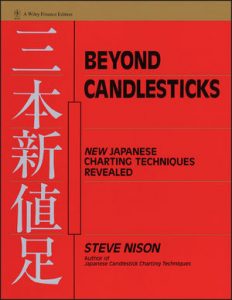Crisis, what crisis? Can technical analysis help?
A word bandied around a lot of late, so I looked up its correct definition in my Collins Dictionary of the English Language (second edition 1986). The meaning is as follows: ‘1) a crucial stage or turning point in the course of something – esp in a sequence of events or a disease. 2) an unstable period – esp one of extreme trouble or danger in politics, economics, etc. 3) a sudden change, for the better or worse in the course of a disease _ Greek Krisis and krivein to decide’. The Merriam-Webster dictionary adds to 3) ‘an unstable or crucial time or state of affairs in which a decisive change is impeding – esp one with the distinct possibility of a highly undesirable outcome’.
Basically, the key concept is change. Earlier this month a book called: ‘Permacrisis: A Plan to Fix a Fractured World’, penned by none other than a trio of big hitters: Gordon Brown, Mohamed El-Erian and Michael Spence was published. The review I read claims the text has a striking chart that shows banking losses in 2023 exceeds those of 2008 – adjusting for inflation. The text also states: ‘’growth models which have focused too narrowly on privatisation and deregulation have outlasted their use-by dates’’. My question therefore is: is it a true crisis?
Or is it media-hype, brittle thinking and fear? Probably all three; as they say, bad news sells newspapers. Potentially it’s linked to binary options, all in or out, good versus bad, black or white, concepts that have come to dominate politics and social thinking. Extreme vocabulary is adding to the feeling of urgency: catastrophe, cliff-edge, conflict, unprecedented, uncharted territory. Which in turn leads to the new ‘in’ word: resilience. Basically this is a well-to-do person’s polite way of saying, ‘just get on and learn to deal with ongoing issues because they are probably here to stay’. In other words a trend, not a turning point.
This is something technical analysts make their bread and butter from: distinguishing between an on-going situation and its reversal. This can be short and sharp, like an island reversal or shooting star candlestick (or hammer after a bear market). Slightly slower like a double top/bottom, head/inverse head & shoulders, or very slow indeed like a rounded top or its grindingly slow equivalent at the bottom of a chart. All these must be seen in context with the type and range of move that preceded the patterns. A good place to start with some of these ideas is Steve Nison’s classic ‘Beyond Candlesticks’ book.
Tags: Peaks, troughs, turning points, worry
The views and opinions expressed on the STA’s blog do not necessarily represent those of the Society of Technical Analysts (the “STA”), or of any officer, director or member of the STA. The STA makes no representations as to the accuracy, completeness, or reliability of any information on the blog or found by following any link on blog, and none of the STA, STA Administrative Services or any current or past executive board members are liable for any errors, omissions, or delays in this information or any losses, injuries, or damages arising from its display or use. None of the information on the STA’s blog constitutes investment advice.
Latest Posts
- Navigating the Market: Insights from Robin Griffiths and Ron William April 9, 2025
- Avoid Revenge Trading: The Key to Long-Term Trading Success March 31, 2025
- Mastering Relative Strength Portfolios: Key Takeaways from the March STA Meeting March 12, 2025
- Stay Disciplined, Stay Profitable February 26, 2025
- Understanding Price Gaps in Trending February 19, 2025





















Latest Comments